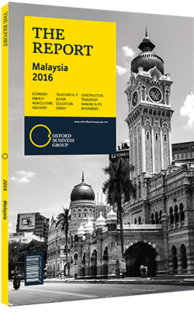New applications being implemented in Malaysian agriculture
The country is targeting its innovation initiatives in key industries, including agriculture, where it is expected to have a major impact. Some 88% of Malaysia’s palm oil crop is exported, and edible oil accounts for more than 5% of Malaysia’s annual exports. The plan is to move up the value chain to develop higher-end products like fuels and chemicals by exploiting the waste created by the industry’s more traditional products. The Economic Transformation Plan (ETP) aims to generate RM178bn ($44.1bn) in gross national income (GNI) from the palm oil industry by 2020. The segment is also one of 12 targeted areas under the ETP and produces at least 83m tonnes of dry biomass a year, a figure expected to rise to 100m dry tonnes by 2020.
New Strategy
Under the National Biomass Strategy 2020, which was launched in 2011, Malaysia aims to capitalise on its world-leading position in the palm oil industry to create new sources of wealth. Government research shows that moving into more sophisticated bioproducts could boost GNI by as much as RM30bn ($7.4bn) by 2020, creating more than 60,000 jobs, although an independent study by Netherlands-based LEI Wageningen noted that the price of crude oil will be crucial to the economic viability of certain biomass uses. The government wants to ensure Malaysian companies “participate in the real biomass value creation, beyond merely supplying biomass resources,” Mah Siew Keong, a minister in the Prime Minister’s Department and special advisor to Agensi Inovasi Malaysia (Malaysian Innovation Agency, AIM), said at the June 2015 Biomass Outlook Conference. In developing its biomass business plans, Malaysia will need to pay close attention to both the costs of conversion and the price of fossil fuels, which biomass products aim to replace. “Two developments are critical to making biomass a profitable venture,” LEI Wageningen’s macroeconomic impact study reports. “The first is the efficiency of technologies to collect palm biomass in a sustainable manner and convert it into final products relative to fossil resources-based technologies. The second is the (development) price of fossil-based substitutes. The difference between the costs of production of the bio-based product and the fossil-based substitute is an important determinant of the economic viability.”
Palm Oil
The Borneo states of Sabah and Sarawak are the largest producers of palm oil in the country, creating more than half of Malaysia’s biomass. AIM has worked with the states to craft their own dedicated biomass strategies with the official biomass development plans for Sabah and Sarawak launched in February 2016. According to a press statement by AIM in February 2016, Sabah biomass development is grouped around three clusters in Lahad Datu, Sandakan and Tawau. Using 4.8m dry tonnes of biomass each year, it is expected that Sabah will be able to raise annual industry revenue by RM3.2bn ($792.1m), creating 25,000 new jobs and registering investments of RM13.5bn ($3.3bn). The Palm Oil Industrial Cluster at Lahad Datu is an industrial park catering to oil palm and plantation-related businesses.
The world’s biggest biodiesel plant, now fully Malaysian-owned, has also been operating in the cluster since 2007. In 2014 Genting Plantations and US partner Elevance Renewable Sciences agreed to build a bio-refinery with a capacity of 240,000 tonnes. In Sandakan, a region where 40% of Sabah’s palm oil is produced, Malaysia-based Hap Seng Consolidated is spending RM1bn ($247.5m) on a refinery complex that will cater to plantations companies. Sarawak is also expected to use about 6m dry tonnes of biomass in four clusters in Bintulu, Miri, Tanjung Manis and Kuching. The state expects to have as many as 10 biofuel and biochemical plants and has proposed a dedicated biomass plantation to produce crops for biofuel on marginal land. Sarawak expects additional annual revenue of RM4.8bn ($1.2bn), creating 35,000 new jobs and investments worth RM18bn ($4.5bn).
You have reached the limit of premium articles you can view for free.
Choose from the options below to purchase print or digital editions of our Reports. You can also purchase a website subscription giving you unlimited access to all of our Reports online for 12 months.
If you have already purchased this Report or have a website subscription, please login to continue.

